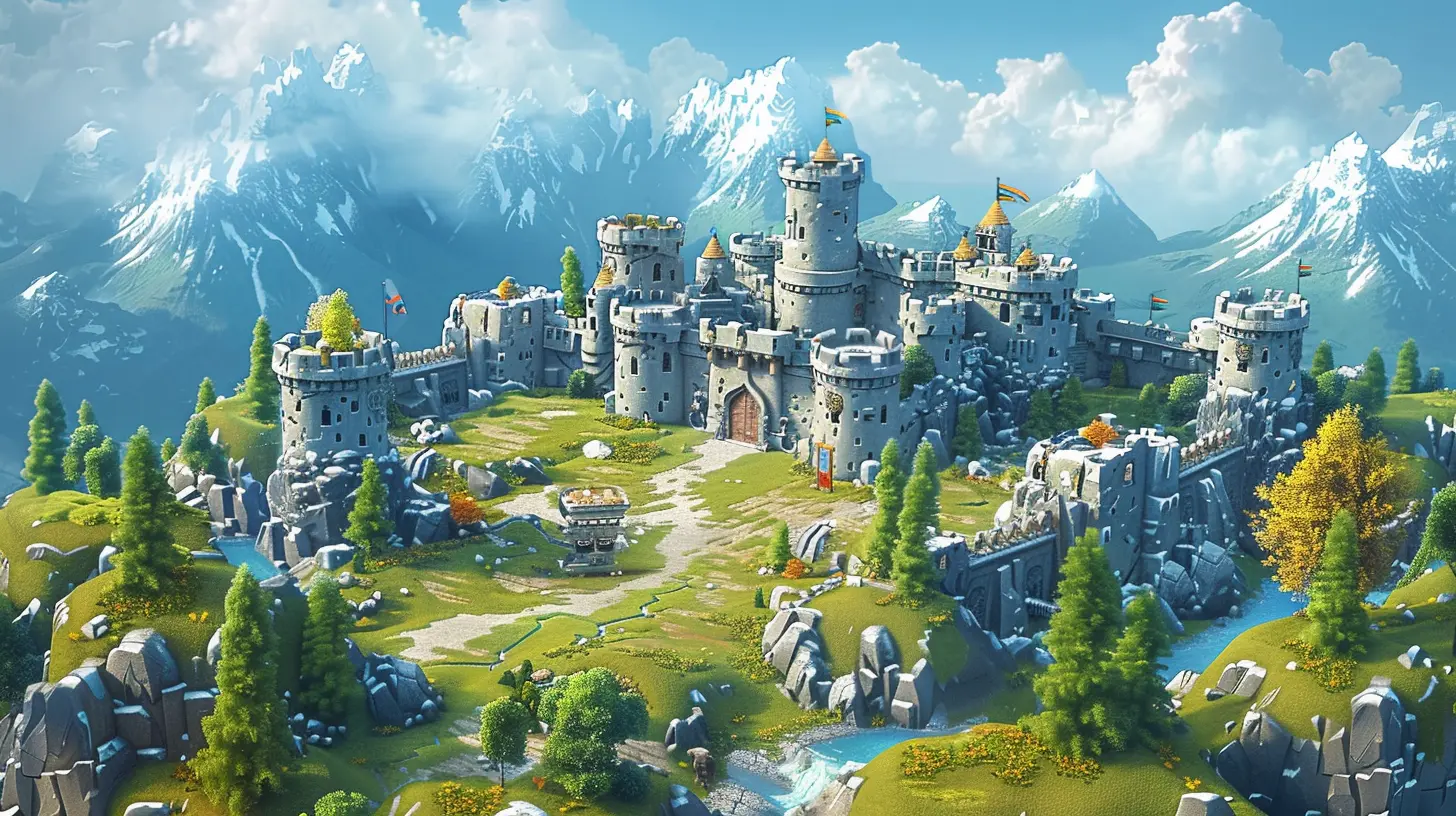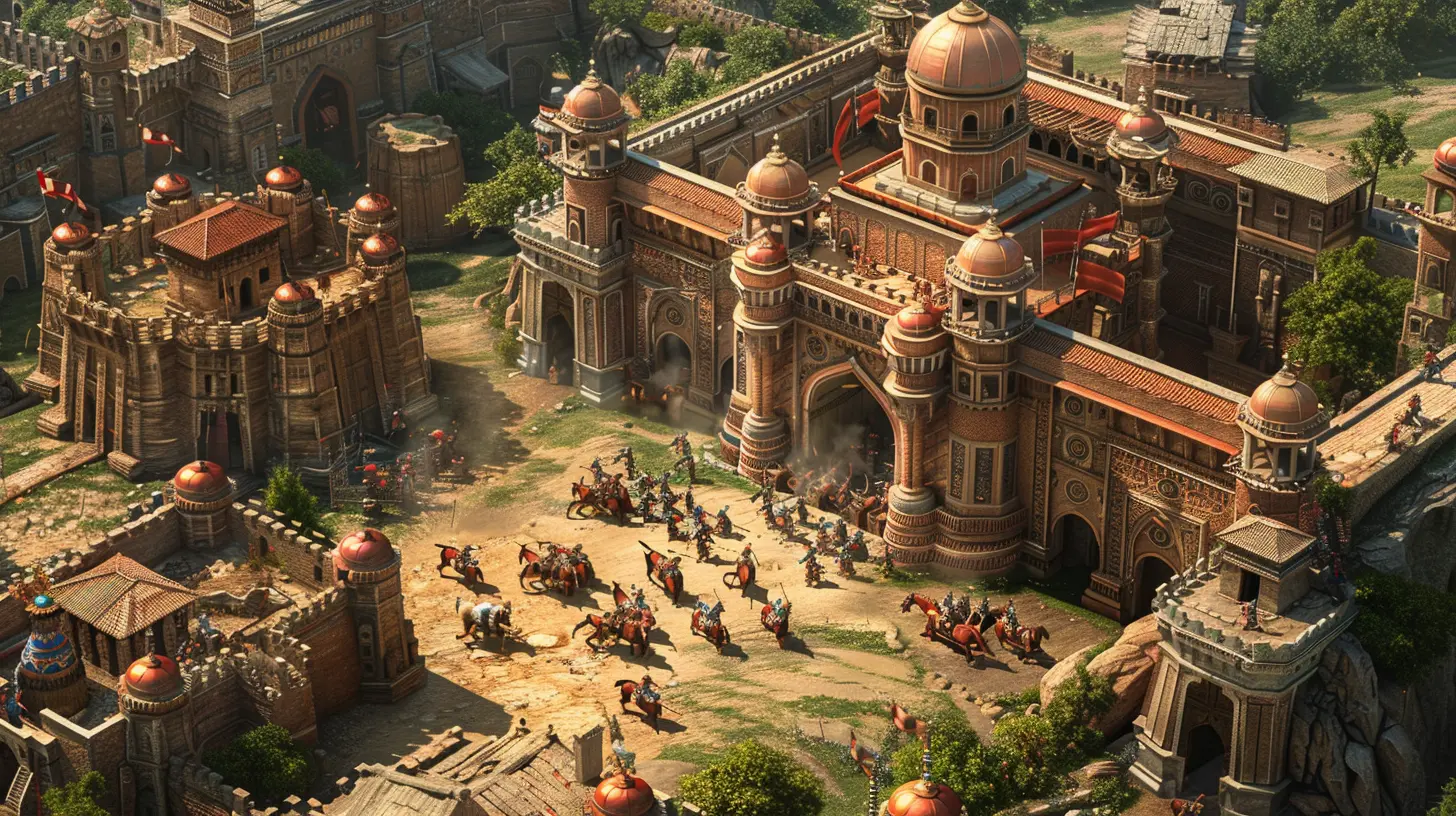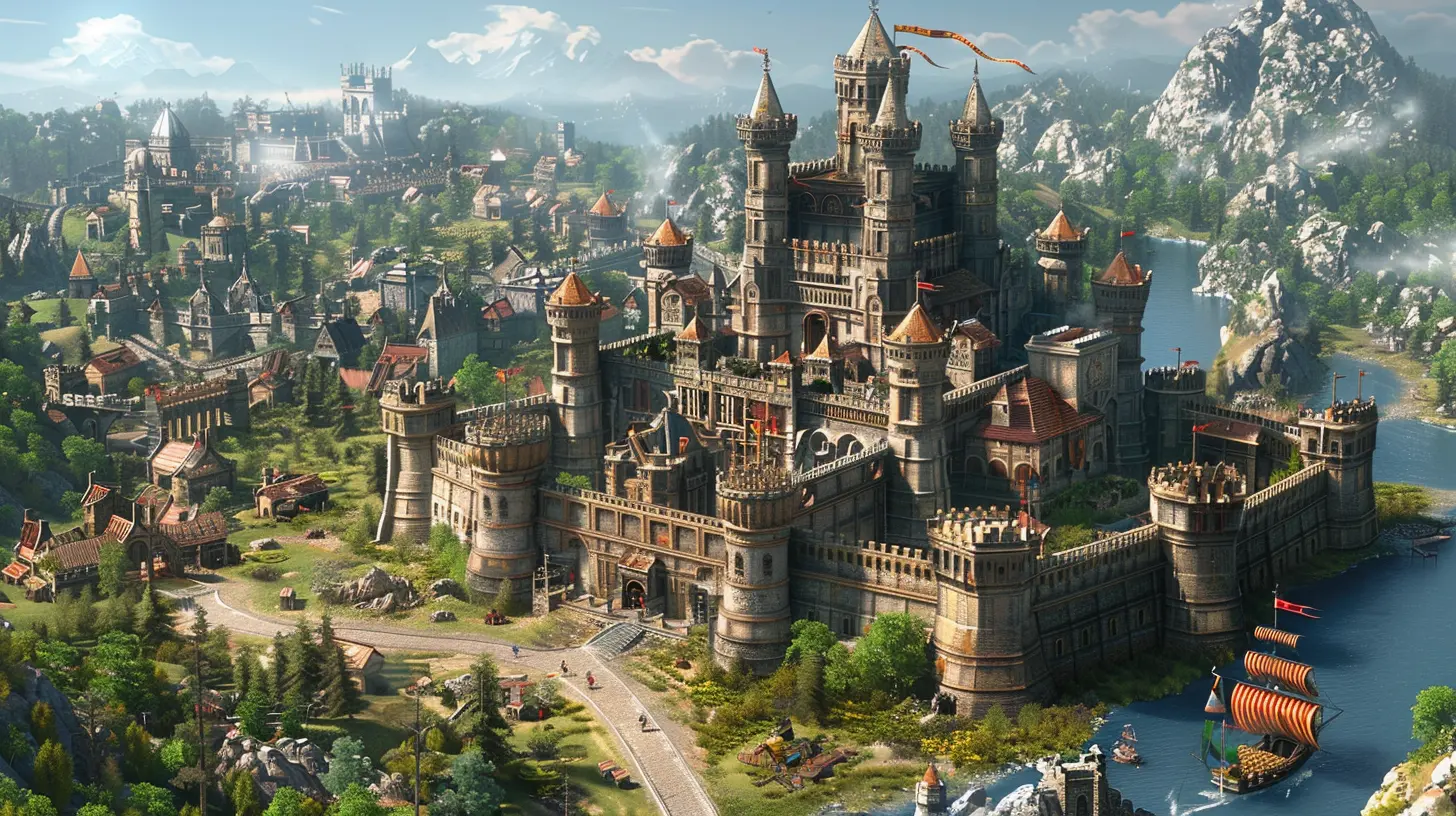Creating Dynamic Fortifications in Base-Building Strategy Games
9 August 2025
If you've ever sunk hours into a base-building strategy game like RimWorld, They Are Billions, or Factorio, you already know the thrill of watching enemies slam against your carefully constructed defenses — only to fall like lemmings. There's a certain satisfaction in knowing your base isn't just surviving — it’s thriving like a digital stronghold. But hey, not all fortifications are created equal. Static walls? Yawn. We're talking about dynamic fortifications — defenses that evolve with the game, adapt to threats, and give you a real tactical edge.
So, how do you go from slapping down a few walls to creating a dynamic defense system that makes your enemies weep? Let’s dive into the art of fortification, strategy, and a little bit of psychological warfare that’ll make you the Napoleon of your digital domain.
Why Static Defenses Don’t Cut It Anymore
Static defenses have their place — early game, low-resource, and absolute panic moments come to mind. But as the game progresses and enemies become smarter, faster, and nastier, that same row of walls and a couple of turrets won’t hold for long.Think of static defenses like a sandwich with stale bread — okay for a quick bite, but you’ll regret it by the third chew. Dynamic fortifications, on the other hand? That’s your custom-made pizza with layers of strategy, automation, and adaptability.
Common Pitfalls of Static Bases:
- Predictability: Enemies can (and will) learn your layouts.- Limited Coverage: One breach can spell disaster.
- Resource Sinks: Constant repairs or rebuilds drain materials.
Your goal? Out-think your opponent. Whether it's waves of mutated zombies or high-level raiders, you’ve got to build smarter — not just thicker walls.
The Core Principles of Dynamic Fortifications
Let’s break it down. At its heart, a dynamic defense system follows a few golden rules:1. Modularity
Think LEGO. A good base should have interchangeable, upgradable parts. If one section gets destroyed, it shouldn’t cripple your entire defense. Create sections that can be walled off, powered independently, or repurposed.2. Automation
Turrets with motion sensors, traps triggered by proximity, drones on patrol — automation is your best friend. Games like Factorio make this a core mechanic. Don’t micromanage what a robot can handle better.3. Adaptability
The best dynamic fortifications evolve with the enemy. You should be able to respond to changes in the enemy's behavior or composition without having to start base-building from scratch.4. Resource Efficiency
Think long-term. Dynamic doesn't mean excessive. Use smart choke points, overlapping fields of fire, and upgradeable modules that give you bang-for-your-buck performance.
Building Smarter, Not Harder
Choke Points: The MVP of Defense Design
Want to make enemies regret entering your base? Funnel them. A well-placed choke point forces all enemies into a narrow killing zone. Combine that with rapid-fire turrets and traps, and you’ve got a meat grinder.Make your choke points:
- Narrow enough to control,
- Long enough to load with traps and time-delayers,
- Versatile enough to plug in new tech as you unlock it.
Imagine it like a haunted carnival house — lots of twists, turns, and terrifying surprises.
Layered Defense: The Onion Strategy
Single wall? Bad idea. Three concentric walls, each with a trap corridor in between? Now we’re talking. Layered defenses buy you time. Even if the outer layer falls, you’re not toast.Layer like you’re dressing for a snowstorm. Start with:
- Outer reconnaissance wall (to delay and warn),
- Mid-level trap corridors,
- Inner core hardened defenses — your last stand.
Mix in AI-controlled units, flying drones, or a mobile response team you’ve trained to plug gaps. Flexibility is everything here.
Traps, Turrets, and Trickery
You don’t just want to stop enemies. You want to demoralize them. Okay, maybe not in real life, but digital enemies can still be manipulated.Here’s a toolbox of fun:
1. Decoy Structures
Create a “fake” resource room or unguarded entrance – something that screams “raid me” – but leads them straight into a gauntlet. Classic bait-and-switch.2. Kill Zones
Imagine a hallway full of traps, flame turrets, and gas vents. That’s your kill zone. Position it after a weak-looking security breach to lull enemies into charging straight through.3. Dynamic Repair Systems
Ever play They Are Billions and lose half your base before you repair it? Automated repair drones or quick-replaceable wall segments will save your bacon. Keep extra materials in nearby storage so you can rebuild instantly under fire.Fortifying With Tech
Different games offer different tech trees, but the idea is the same—gear up or get rekt.Game-Specific Tips:
- RimWorld: Use sandbags and turrets in zig-zag patterns. Keep colonists with long-range weapons just behind cover.- Factorio: Laser turrets with redundant power lines are crucial. Also, never underestimate the power of landmines.
- They Are Billions: Timing is everything. Space your defenses and use shocking towers to buy time.
When tech evolves, so should your defenses. Laser turrets? Great. EMP-resistant shielding? Even better. Constantly push to integrate new tech into your existing base — you don’t want to restart every time you unlock a new gadget.
Environmental Advantage: Use the Map to Your Benefit
Why build a wall when cliffs already do the job, right? Terrain is your silent partner.Tips to capitalize on environment:
- Build near natural choke points like rivers or cliff edges.
- Use elevation — having the high ground isn’t just Star Wars drama; it’s a real advantage.
- Destructible terrain can sometimes be turned into traps. Collapse a mine shaft on a raiding party? Chef’s kiss.
Mother Nature is brutal. Use her.
Dynamic Defense in Multiplayer
Think you're clever? Now imagine your opponent is too. In PvP base-building games like Rust or Ark: Survival Evolved, your defenses need a whole new level of paranoia.Tips for PvP dynamic defense:
- Randomize entryways so players can’t memorize raid paths.
- Fake weaknesses, like leaving a soft wall exposed that leads to a trap room.
- Responsive defense — set up alarms and auto-responses to notify you when your base is under attack.
PvP is a chess game with grenades. Trick, trap, and troll — then rebuild smarter.
Maintenance: The Unsung Hero of Fortification
What’s the point of epic defenses if they fall apart faster than a soggy taco? Maintenance isn’t sexy, but it keeps you alive.Set up:
- Scheduled patrols or bots to check weak points.
- Auto-repair nodes (where available).
- Backup power sources so your turrets don’t turn into art installations mid-attack.
Pro tip: Always keep a buffer stash of key materials like stone, metal, and circuits. Running out mid-attack is like forgetting your towel at a beach party. Embarrassing. And fatal.
Psychology of Base Design
Yeah, we're going there.Enemies—especially in multiplayer—make decisions based on what they see. That means your base design can manipulate their choices.
Want to look weak? Build in a chaotic, patchy pattern. Want to look impenetrable? Tight symmetry, multiple layers, and visible firepower work wonders.
Sometimes, the best defense is making your enemy think, “Nope, not worth it.”
Wrap-Up: Your Base is a Living, Breathing Beast
Creating dynamic fortifications in base-building strategy games isn’t just about placing walls — it’s about thinking three moves ahead. You’re not just fending off enemies; you’re designing a system that reacts, adapts, and evolves.Remember:
- Stay modular and adaptive.
- Use traps and terrain to your advantage.
- Mix tech with strategy.
- Maintain and upgrade constantly.
- Play with the psychology of war (yes, digital war counts).
So next time an enemy horde comes charging your way, you won’t be crossing your fingers. You’ll be sipping coffee, watching the fireworks, knowing your defenses are smarter than the things attacking them.
Game on, Commander. Build bold.
all images in this post were generated using AI tools
Category:
Game StrategiesAuthor:

Lucy Ross
Discussion
rate this article
1 comments
Fern McLaughlin
Who knew walls could be so chatty? With dynamic fortifications, your base can finally gossip with the neighboring fortress. Just don’t let the catapult eavesdrop on the juicy secrets!
August 22, 2025 at 5:03 AM

Lucy Ross
Thanks! Dynamic fortifications really do add a fun twist to base building—who knew strategy could be so social? 😊


